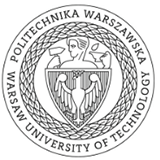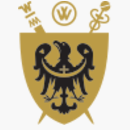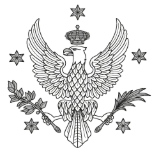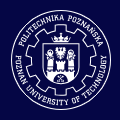Detailed introduction of the Medical University of Silesia, Katowice:
Introduction
The Medical University of Silesia in Katowice is located in Katowice, Silesian Province, Poland. It is the largest medical university in Poland and Central Europe. Its medical education and scientific research level have a high reputation in Poland and even internationally.
Overview
Number of students: about 10,218 students.
Number of faculty and staff: 1,201 academic staff and 2,272 administrative staff.
History and establishment time
The school was founded on March 20, 1948, originally located in Rokitnica, Bytom, named Medical Research Institute. In March 1950, it was officially named Warynski Silesian Medical Academy. On February 28, 1990, it was officially renamed Silesian Medical College. In 1957, the school's headquarters moved to Katowice.
School Strength
Faculty: It has a teaching team of 1,201 people, including 295 professors. Many teachers have rich teaching and scientific research experience in the medical field and can provide students with professional guidance and education.
Scientific Research Achievements: It has a strong research foundation in the fields of heart and cardiovascular system. Recent projects include research on the potential of lung transplantation in patients with acute COVID-19 and the degree of influence of the diaphragm on balance and breathing.
International Cooperation: It has cooperative relations with more than 80 international institutions. It has provided English-taught courses since it was certified by the US Department of Education in 1996. There are currently about 500 international students. The school has also joined the EU Socrates-Erasmus exchange student program and established cooperation and exchange agreements with some universities in European countries such as the Czech Republic, Denmark, Estonia, and non-European countries such as the United States, Canada, and Japan.
Institutional nature
Public university.
Educational philosophy
Committed to combining modern medical education with education that respects scientific freedom, humanism, and moral ethics to cultivate professional medical talents who can serve the national interests and welfare, actively promote the development of modern diagnostic and treatment technologies, promote the promotion of innovative medical solutions, and create health care conditions that are beneficial to patients.
Key laboratories and disciplines
Key laboratories: The school has a number of advanced scientific research laboratories, which provide good conditions and platforms for medical research, but no clear information has been found on the specific key laboratories.
Key disciplines: Clinical medicine, ecology and other disciplines are its advantageous disciplines, among which clinical medicine ranks 562nd in the world and ecology ranks 992nd in the world.
Faculty
It has academic units such as the School of Medicine and Dentistry (Zablze Campus), the School of Medicine (Katowice Campus), the School of Pharmacy and Experimental Medicine (Sosnowiec Campus), the School of Health Care (Katowice Campus), and the School of Public Health (Bytom Campus). It has five schools of medicine, dentistry, pharmacy, public health, and health sciences. The School of Health Sciences includes degree courses such as nursing, physical therapy, and nutrition.
Ranking
Ranked 1201-1500 in the 2025 THE World University Rankings.
Ranked 1837 in the US NEWS World University Rankings.
Expenses
The tuition fees for different majors in the school are different, such as the six-year European Doctor of Medicine program, and English-taught courses such as pharmacy, physical therapy, nursing, obstetrics, public health and nutrition. The specific tuition fees have not yet been found, but you can refer to the school’s 2019 The tuition fee for English-taught courses in medicine is about 12,000 euros per year.
Campus
Location: Located in Katowice, one of the important industrial and cultural centers in Poland, with convenient transportation and close connections with many major cities in Europe. It is 400km away from Vienna, 450km away from Prague, 500km away from Berlin, and 400km away from Budapest, providing convenient conditions for students' study and life.
Campus environment: The campus environment is beautiful, creating a good learning and living atmosphere. There are modern teaching buildings, libraries, laboratories and other teaching facilities on campus, as well as student dormitories, restaurants and other living facilities to meet students' learning and living needs.
Campus facilities: The school has five hospitals and three medical simulation centers, which provide a good platform for students' clinical practice. Students can do internships and practical operations in these places to improve their clinical skills.
-

Warsaw University of Technology
-

Poznan University of Life Sciences
-

Wroclaw Medical University
-

Nicolaus Copernicus University
-

University of Warsaw
-

AGH University of Science and Technology
-

Silesian University of Technology
-

Poznan University of Technology
-

Jagiellonian University
-

Adam Mickiewicz University
-

Mesoamerican University
-

Istmo University
-

Mariano Galvez University of Guatemala
-

Regional University of Guatemala
-

Galileo University
-

Francisco Marroquín University
-

Rafael Landívar University
-

University of the Valley of Guatemala
-

University of San Carlos of Guatemala
-

Technological Institute of Tlaxcala Plateau
-

Golfo University
-

Technological University of South Sonora
-

Technological University of Huejotzingo
-

Tizimín Institute of Technology
-

Chilpancingo Institute of Technology

